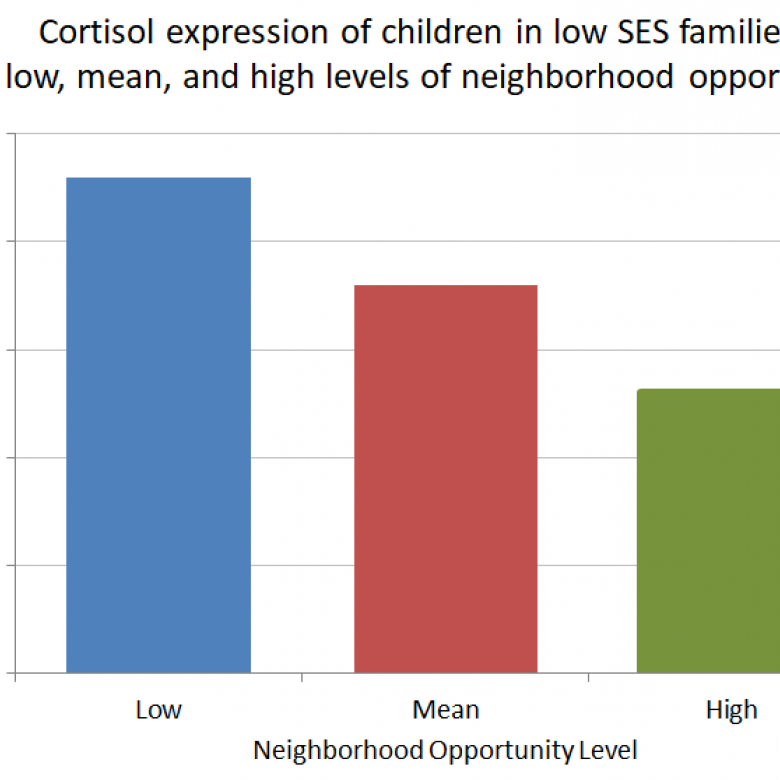A new peer-reviewed study “Family Socioeconomic Status, Cortisol, and Physical Health in Early Childhood: The Role of Advantageous Neighborhood Characteristics” published in Psychosomatic Medicine finds that children of lower socio-economic status (SES) had less stress (measured by cortisol levels) if they lived in higher-opportunity neighborhoods compared to their counterparts living in lower-opportunity neighborhoods.The researchers used the diversitydatakids.org and Kirwan Institute’s Child Opportunity Index combined with data from a longitudinal study of kindergarten children in the San Francisco Bay area. They conclude that, "Higher opportunity neighborhoods may protect against the negative consequences of low family SES on children’s stress physiology and physical health. Public health interventions that bolster neighborhood opportunities may benefit young children reared in socioeconomically disadvantaged family environments."
The findings have been featured at UCSF, US News and World Report, and Business Standard.

